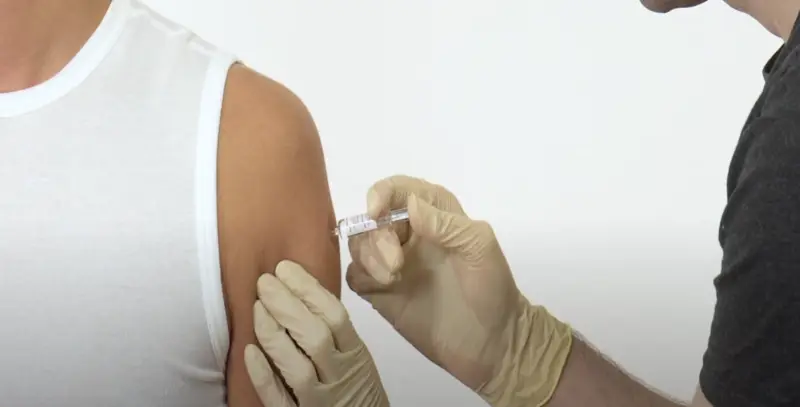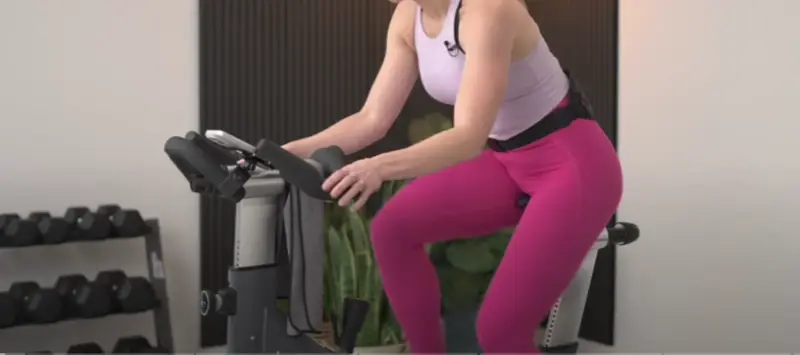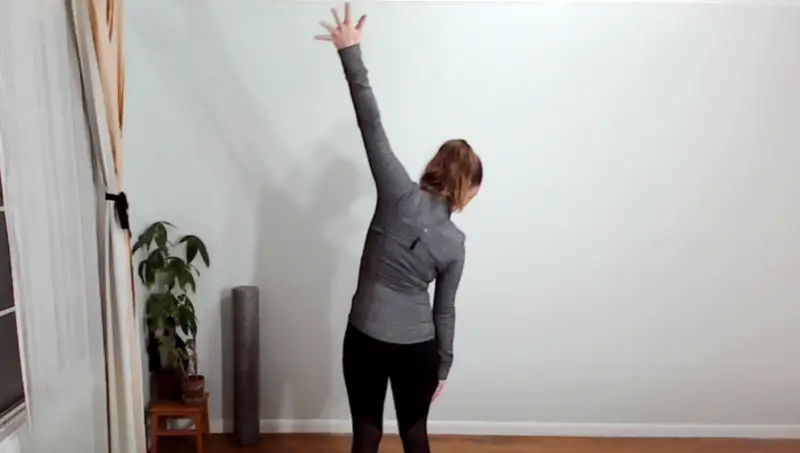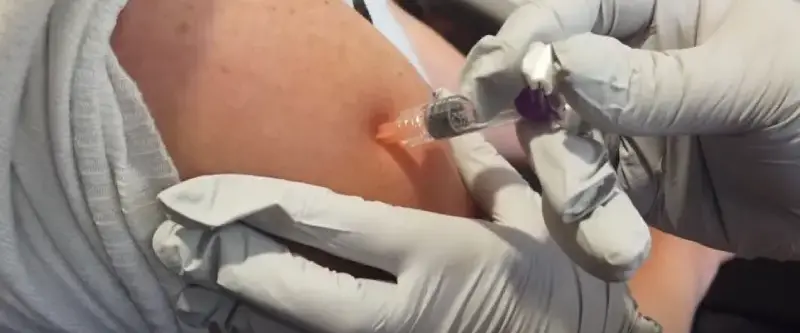A sore arm may occur after vaccination because the injection site is red or irritated. Soreness arms can reduce the strength and endurance of the affected arm, which may affect the bike’s grip and control. A sore arm can also affect balance and control, particularly during technical rides or high-speed descents.
Effective ways to treat a sore arm after vaccination include relaxation, movement, and stretching. Addressing this soreness is crucial for cyclists to maintain performance and comfort on the bike.
In this blog post, we’re here to guide you through the best strategies for treating and managing post-vaccination arm soreness so you can get back on your bike faster.
How To Treat A Sore Arm After Vaccination Cycling: 13 Fixes

Vaccinations are crucial for maintaining health and safety as a cyclist exposed to various elements. However, post-vaccination soreness in your arm can be a hindrance, affecting your ability to ride comfortably. Here are some effective strategies to ease soreness and return to cycling immediately.
Immediate Post-Vaccination Care
After receiving a vaccination, taking care of yourself is essential for a smooth recovery. Here are some steps you can take for immediate post-vaccination care:
Move Your Arm
Immediately after vaccination, gentle movement and stretching of your arm can help disperse the vaccine throughout the muscle and reduce stiffness. Light exercises such as arm circles or reaching for the ceiling can promote blood flow and prevent the injection site from becoming too stiff. The key is to keep the movement gentle and not strain the muscle.
Apply a Cold Compress
Cold packs or compresses applied to the injection site for 15-20 minutes can reduce inflammation and numb the area, relieving soreness. To prevent direct contact, put an ice pack in a towel or cloth, which will help prevent ice burns. Applying cold compresses several times daily during the first 24 hours post-vaccination can significantly mitigate discomfort.
Stay Hydrated
Faster recovery means flushing out toxins and boosting your immune system. Staying well-hydrated ensures that your muscles and tissues are well-nourished, which can help reduce soreness. Drink eight to ten glasses of water daily, and consider increasing your intake if you’re physically active or sweating a lot.
Managing Soreness Over the Next Few Days
While some soreness and discomfort post-vaccination are standard, there are ways to manage it effectively:
Rest Your Arm
You don’t want to lift heavy things or do anything strenuous that might aggravate the soreness. Give your arm time to recover. Try to use the opposite arm for tasks that require significant effort. This doesn’t mean complete immobility; gentle arm use is encouraged to avoid stiffness.
Over-the-Counter Pain Relievers
Ibuprofen or acetaminophen can ease pain and reduce inflammation. You should follow the recommended dosage and inform your healthcare provider if you have any underlying health conditions or are taking other medications.
Heat Therapy
The following 24 hours should be spent applying a warm compress to relax the muscle and increase blood flow, promoting healing. Heat therapy helps soothe the muscles and can be exceptionally comforting. Warm up a towel or heating pad around the aching area for 15-20 minutes several times daily.
Massage the Area
Gently massaging the sore spot can help relieve tension and improve circulation. Use circular motions with light pressure to avoid causingadditional pain. Do this a few times daily to keep the muscle loose and ease stiffness.
Exercise Modifications for Cyclists

For cyclists experiencing arm soreness post-vaccination, here are some modifications to consider:
Lower Intensity Rides
Opt for shorter, lower-intensity rides to keep your arm movements minimal while remaining active. Reducing the intensity of your rides will prevent additional strain on your sore arm and allow it to heal without completely disrupting your exercise routine.
Adjust Your Grip
Change your hand position frequently on the handlebars to avoid putting too much strain on the sore arm. Alternating grips can disperse the pressure across both arms and reduce localized stress on the injection site.
Use Ergonomic Gear
Use padded gloves or handlebar grips to reduce pressure on your arm and enhance comfort. Ergonomic gear minimizes strain and can be especially helpful when dealing with soreness. Padded gloves can absorb shocks from the road, making rides more comfortable.
Long-Term Strategies
To ensure long-term well-being and recovery, consider these strategies:
Gradual Reintroduction
Gradually increase your cycling intensity as the soreness diminishes, ensuring you don’t overexert the affected arm. Start with light rides and slowly build up to your usual intensity. This gradual approach allows your muscles to adapt and recover fully.
Strength Training
Incorporate strength training exercises for your upper body to improve muscle endurance and resilience. Exercises such as push-ups, dumbbell lifts, and resistance band workouts can strengthen the muscles around your shoulders and arms, making them more resilient to soreness in the future.
Regular Stretching

Perform regular arm and shoulder stretches to maintain flexibility and prevent future soreness. Incorporate a routine that includes stretches for the deltoids, biceps, triceps, and shoulder muscles. Stretching not only helps in recovery but also improves overall muscle function.
Conclusion
Remember that getting a sore arm after a vaccination doesn’t have to stop you from cycling. You can continue with your cycling routine by using the proper techniques and making some adjustments while ensuring a comfortable recovery.
The goal of providing these 13 ways to treat post-vaccination soreness was to give you practical strategies to deal with this issue without giving up your love for cycling. So, the next time you get vaccinated, you don’t have to worry about the aftereffects.
FAQs
Why Does My Arm Feel Sore After Getting Vaccinated As A Cyclist?
A tiny squirt of vaccine injected into your arm muscle stretches the muscle fibers and triggers an immune response, causing temporary inflammation and discomfort. Tenderness can generally prevent you from using your arm for a few days.


